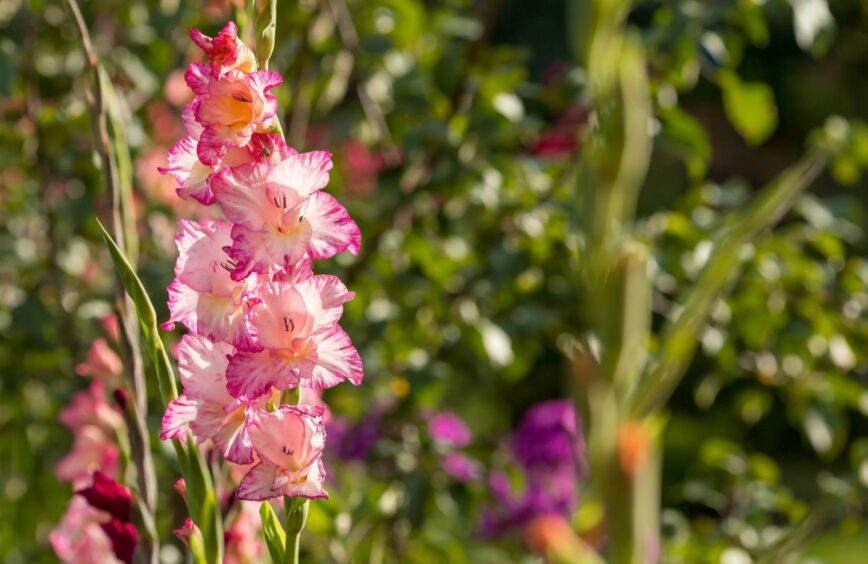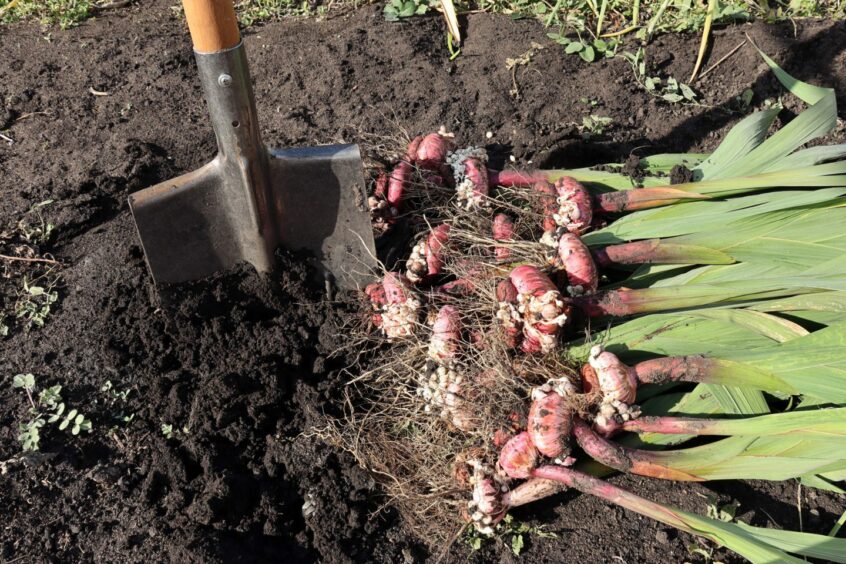The other week I was working with the volunteer gardeners at Scone Palace to get the last batch of gladiolus planted.
We’ve planted three batches in the walled garden- the first at the beginning of May, a second in the middle of that month, and the final plantings at the start of June.
They can take around 12 weeks growing time before they flower, so with this staggered or successional sowings, in theory I should have gladiolus flowering from July through to September.
‘Glads’ until autumn
I’m gambling with the timing of the last batch, it’s possibly a bit late, but if we get a mild autumn then we’ll still have some colour in this area at the start of autumn, with stems also available for cutting for the vases indoors.
The volunteers are valuable members of our gardening team, a feeling I suspect is replicated throughout the country, in many other gardens.
I love researching the gardening history of Scone Palace during my spare time, and one source of information are the gardening magazines from the 19th Century.
An article from 1866 states that there were 26 gardeners working in the grounds of the Palace at that time.
Today we maintain them with a team under of quarter of that.
Volunteers help big historic gardens
There’s no doubt we benefit from the advancement of machinery which would do the work of two or three gardeners today, but we still fall short of that staff figure from the heyday. Gosh, the business just couldn’t afford it these days!
We’re very grateful there are people willing to give up some of their time to help us conserve these historic grounds.
There are a variety of reasons someone may choose to volunteer, and not just purely for the love of gardening.
You can build on existing experience and knowledge or learn new skills completely, keep fit and active by getting out of the house for a few hours, and spend time outdoors with like-minded company.
Keeping our country beautiful
I’m in awe of all the ‘in bloom’ gardening groups that keep our towns and villages colourful. These folk really are doing their bit for our communities by keeping hanging baskets watered, planting up old horse carts to make summer displays and brightening up neglected corners.
I know I don’t have to wait until I’m retired before getting involved in things like this but at the moment I’ve got enough to do.
I do look forward to one day getting stuck in and doing my bit – plus hopefully helping out at a local garden too.
In the meantime I’d like to thank the volunteers who are helping our work at Scone Palace, and as someone who has a love for Scottish horticulture in general, also every other gardening volunteer throughout the country for helping to keep our country’s gardens in top shape.
Inspired by the Victorians
I was keen to do a gladiolus display this summer after seeing them laid out in a neat row in the BBC television series from the eighties, The Victorian Kitchen Garden.
Not only did I find this a nostalgic look back to what is, in my opinion, the glorious era in gardening history, but also an opportunity to compare what and how we do things today.
Just now in the veg plot the brassicas bed will be filled with young plants of sprouts, kale, cauliflower, broccoli and cabbages.
Pigeons just love their foliage, tearing and feeding on them and often leaving only the stalks behind.
Today in the modern kitchen garden we use a netting to cover and protect them, but this wasn’t needed during Victorian times. The large number of gardeners working in there would be enough to keep them away.
Whistle while you work
This was also an effective method of keeping birds away from the strawberry beds, either this or the noise from the men whistling.
This is what the head gardener wanted them to do, so he knew that they didn’t have a mouthful of the strawberries they were meant to be picking!
The Villa Gardener magazine in 1870 suggested the best time in the day for harvesting strawberries is with or after your coffee for breakfast.
Over the years we have come up with numerous ways of trying to deal with slugs and snails before they had a chance to feed on our strawberry plants – crushed eggshells, gravels and beer traps to name a few.
Tips from the 19th Century
Although many gardening tricks and techniques from those days are still being used today, gone is the chance to make a paste of train oil and soot that was applied to the slate or board bed edging, forming a barrier they did not like to cross.
The advice on when to cut box hedging, which is the next job on my list, remains pretty much the same today.
The best time is the beginning of June, when the risk of frost has passed.
Do it on a dry, cloudy day to avoid the sun scorching any of the newly exposed foliage.
For this job I get most satisfaction by using hand shears rather than a powered hedge trimmer, especially when trimming box topiary. I guess I’m just old fashioned at heart.




Conversation